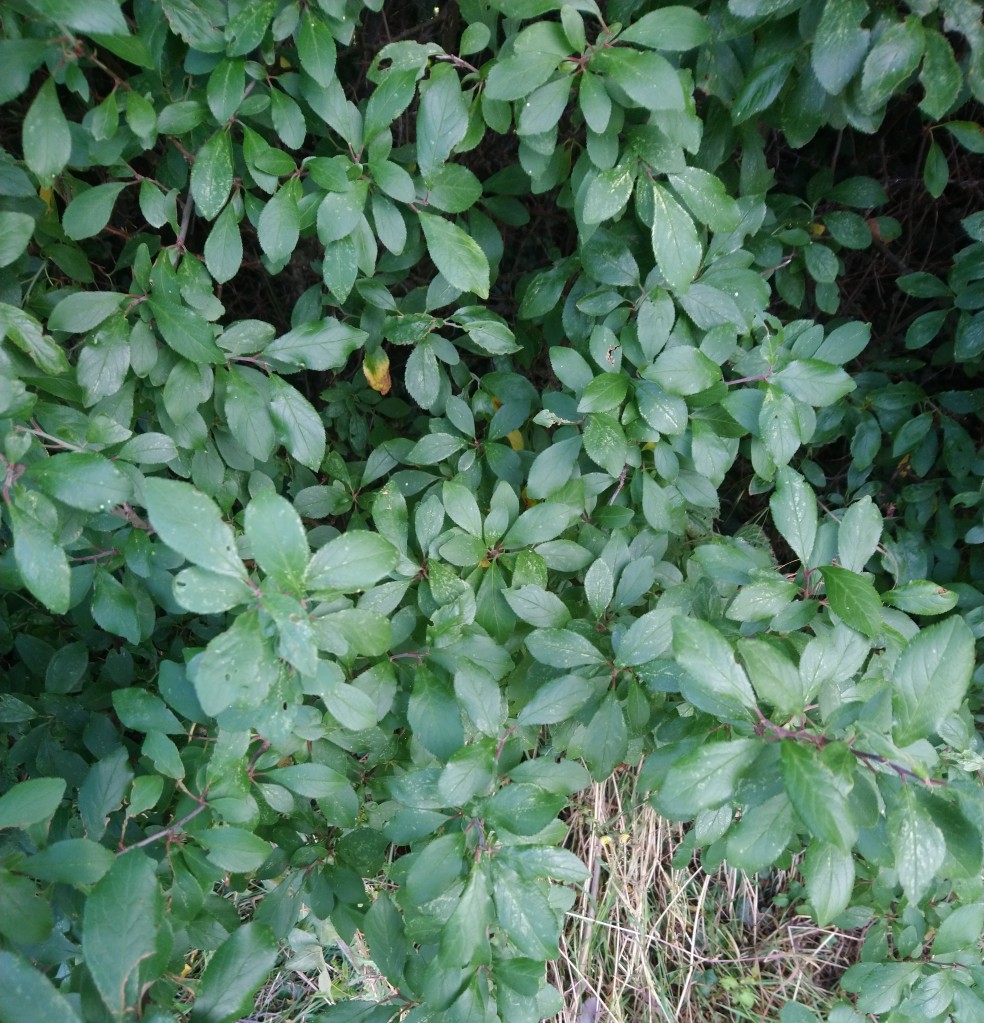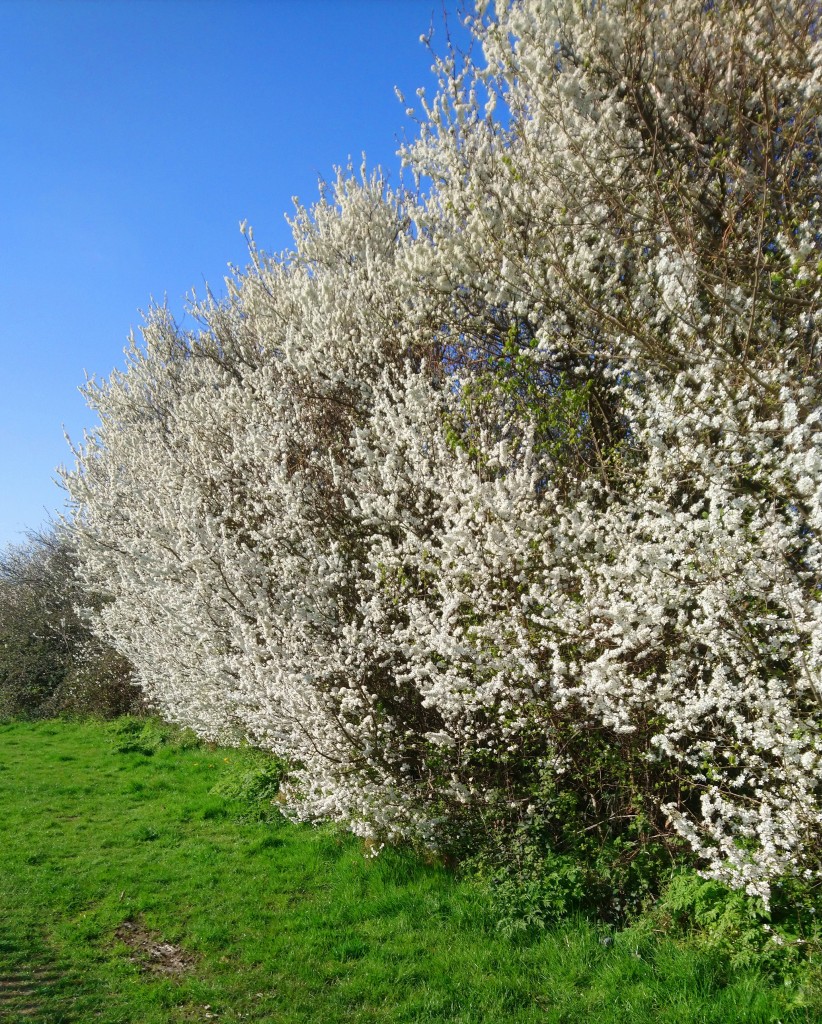
[282] Prunus spinosa, Sloe
Introduction
Prunus spinosa, Blackthorn, is a sprawling spiny shrub that is common and widespread in the wild in the UK. It is best known for its blue fruits that are used in making sloe gin. The shrubs are generally known as Sloes in Britain. and so are the fruits.
Two other unrelated species found in Africa and Australia are called Blackthorn. Some other similar species of Prunus are called Sloes.
Taxonomy
Kingdom – Plants
Division – Vascular Plants
Class – Angiosperms (Flowering Plants)
Order – Rosales
Family – Rosaceae
Subfamily – Amygdaloideae (Includes Apples, Hawthorn and Cotoneaster)
Tribe – Amygdaleae (Just Prunus)
Genus – Prunus (Cherries, Plums and others)
Subgenus – Prunus
Section – Prunus
Scientific Name – Prunus spinosa
There are some varieties and cultivars.
Names
Blackthorn comes from black and thorn. This shrub is obviously thorny. Black probably refers to its dark bark. Sloe comes from Old Germanic roots, possibly meaning blue – for the fruits. Spinosa means spiny or prickly. (Romans weren’t as fussy as modern botanists in distinguishing between spines, prickles and thorns!)
Description
We have already seen the main species in the genus [280] Prunus. Prunus spinosa is in the same Section as plums, including Prunus domestica, the Wild Plum, and Prunus cerasifera, the Cherry Plum. But its fruits, which are not edible, do not look like plums or taste like plums.
It can grow to about five metres as a small tree but is usually a dense shrubby bush. The bark is very dark in colour and branches are spiny. Leaves are oval in shape with finely serrated edges.


In spring it is covered with small pure white flowers, similar to other cherry species.



Even though it is classified with plums, the fruits, also called sloes, are smaller than cherries. They are a waxy blue colour, turning almost black later.







It is sometimes confused with Prunus cerasifera although it has a shrubbier habit and there are differences in the leaves, flowers and fruits.
Habitat and Use
The natural distribution of Prunus spinosa more or less corresponds to Europe apart from the far north.
Because of its thorns, it is used for cattle-proof countryside hedgerows. Varieties are available for cultivation as an ornamental garden plant, and also for hedges. Cultivars may have differently coloured leaves and fruit.

The wood from the Blackthorn is used to make walking sticks, especially the Irish Shillelagh. As a hardy plant it can be used as a rootstock for other grafted Prunus species.
The fruit is very bitter and sour and should not be eaten raw. They can be used to make jams or chutney.
Other Notes
Sloe Gin is very much a British drink. It is actually a liqueur, not gin, but is made with gin. It is produced commercially but you can make it yourself at home. You just need a large jar into which you put lots of ripe sloes and lots of sugar. The sugar takes away the bitterness of the sloes. Fill the jar with gin and leave it for about a year. That’s an oversimplification but eventually you can discard the sloes and you have a ruby red drink. You can look up exact recipes.
Various commercial versions of sloe gin (and similar traditional drinks in other countries) may use other species to provide the fruit and may use cheaper alternatives than gin.

Pingback: [358] Viburnum Species, Viburnum | The Species of Britain